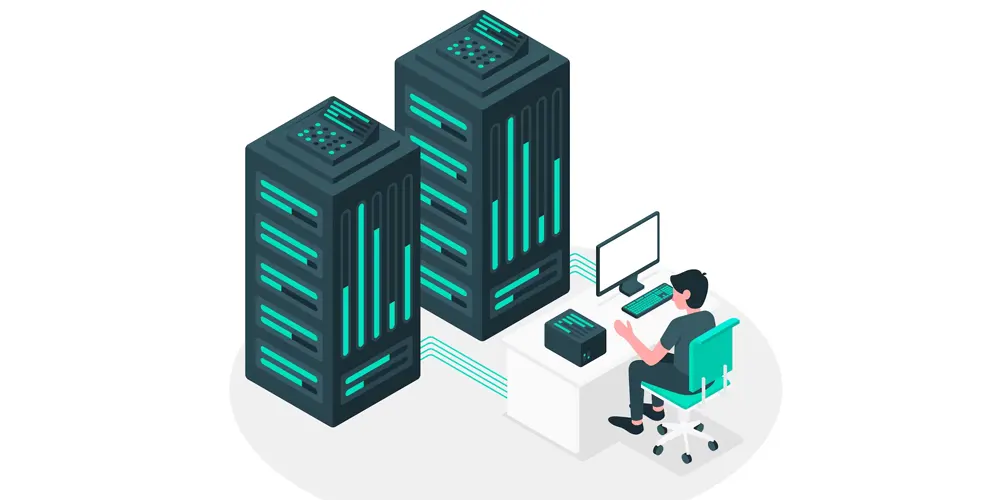Top 7 Strategies For Ensuring Call Quality While Minimizing Costs with LCR
Too much of anything is harmful but people often don't realize when they’re going overboard. This is especially true when overextending seems to be highly rewarding.
This is especially true when it comes to LCR. Reducing costs and boosting profit margins can quickly get out of hand. While profits are rewarding, they shouldn't come at the cost of comprising customer experience and quality of service.
Doing that will ensure you’re in the fast lane speeding towards business closure. So how does one ensure call quality while minimizing costs with LCR?
We have some strategies that can ensure both objectives are accomplished. You’ll be surprised to find how obvious some of these are.
So let’s dive straight into these!
1. Monitoring and Managing Network Congestion

LCR or not, you should be monitoring and managing network congestion. Minimizing network congestion will help you deliver a higher call quality. The good part is that it provides added benefits if you implement LCR.
This integrated approach combines intelligent routing strategies and network oversight. The result is a harmonious balance between quality and cost-efficiency.
Monitoring network congestion involves real-time tracking of data traffic and identifying potential bottlenecks. Thus, operators can proactively address congestion issues before they severely impact call quality.
Timely interventions, such as traffic rerouting or load balancing, can effectively enhance overall call performance and user satisfaction.
Managing network congestion requires employing Quality of Service (QoS) measures to prioritize critical call data over less time-sensitive traffic.
Through QoS mechanisms, like traffic shaping and packet prioritization, voice packets can be prioritized for providing a better experience.
Least Cost Routing (LCR) complements congestion management by selecting the most cost-effective call routes without compromising quality.
LCR algorithms analyze various carriers' tariffs and network conditions to identify optimal paths for outgoing calls. This way, call providers can minimize call termination expenses while ensuring reliable call quality.
Furthermore, combining congestion monitoring and LCR enables dynamic adaptation to changing network conditions. As congestion levels fluctuate, the routing algorithms can automatically adjust call paths to avoid congested routes.
As a result, you deliver better call quality at affordable prices.
2. Partnering with Reliable Carriers

Here’s another obvious thing that a carrier should do that benefits not only LCR but their business as a whole. Sure, the reliable ones might cost you a bit more but the call quality you’d provide will be top-notch.
Partnering with reliable carriers plays a pivotal role in ensuring call quality. Strategic collaboration enhances the overall efficiency and effectiveness of telecommunication services. As a result, you deliver a seamless communication experience for end-users.
By joining forces with trustworthy carriers, businesses can leverage their established infrastructures and robust networks. Reliable carriers often have extensive coverage and redundant routes, which translate to lower call drop rates and improved call quality.
This partnership ensures that call traffic travels through well-maintained and congestion-free paths. Thus, minimizing the likelihood of service disruptions and ensuring crystal-clear audio during conversations.
Furthermore, partnering with reputable carriers grants access to advanced traffic engineering capabilities. These carriers employ sophisticated routing algorithms and QoS mechanisms to optimize call routing decisions.
Through LCR, the most cost-effective routes are selected without compromising on call quality. This dynamic routing approach enables telecommunication providers to strike the right balance between cost savings and call performance.
Moreover, reliable carriers typically prioritize call delivery and have stringent service-level agreements (SLAs). They commit to certain performance standards, including call completion rates and latency levels.
Such agreements hold carriers accountable for meeting quality benchmarks, assuring end-users of consistent and dependable service.
Additionally, the partnership with reliable carriers fosters long-term stability and confidence in the telecommunication ecosystem.
Businesses can focus on core operations, knowing that their communication infrastructure is in capable hands. This sense of reliability translates to enhanced customer satisfaction and loyalty.
3. Optimizing Interconnection Agreements

Optimizing interconnection agreements is a vital factor in implementing Least Cost Routing (LCR). These agreements govern how telecommunication operators connect and exchange call traffic.
Firstly, optimizing interconnection agreements allows for efficient and seamless call routing between different carriers.
By streamlining the interconnection process, call traffic can flow smoothly from one network to another. This reduces call setup delays and ensures a better call experience for users.
Secondly, well-optimized agreements enable the establishment of direct interconnections where feasible.
Direct interconnections eliminate the need for intermediaries, reducing call latency and potential points of failure. As a result, call quality improves significantly, and the risk of call drops or audio distortions decreases.
These optimized agreements can also lead to more favorable pricing terms between carriers. Negotiating competitive rates based on traffic volume and call patterns can result in cost savings. Especially when combined with Least Cost Routing.
This cost-efficient approach ensures that calls are routed through the most economical paths without compromising on quality.
Furthermore, interconnection agreements that prioritize Quality of Service (QoS) parameters contribute to call quality optimization.
Implementing QoS mechanisms, such as bandwidth reservation and traffic prioritization, allows for the seamless transmission of voice packets, guaranteeing clear and uninterrupted calls.
Additionally, optimized interconnection agreements foster cooperation among carriers, leading to shared best practices and technical expertise.
Collaborative efforts in maintaining network reliability and troubleshooting issues can significantly enhance call quality and reduce downtime.
4. Using Intelligent Routing Algorithms

Technology can be your business’s best friend. Advancements in computing have made a manual and cumbersome task such as routing calls quite effortless. The recent advancements in AI and ML have only made routing more intelligent.
Sophisticated routing algorithms do as the name suggests, i.e. route calls intelligently and dynamically based on monitoring data.
These enable telecommunication providers to make optimal call routing decisions, striking a balance between cost-effectiveness and call performance.
Intelligent routing algorithms leverage real-time data and historical call patterns to dynamically select the most efficient and cost-effective call paths.
Through continuous monitoring and analysis, the algorithms adapt to changing network conditions. They automatically adjust call paths to avoid congested or unreliable routes.
This dynamic approach ensures that calls are routed through paths with minimal latency and optimal call quality, leading to higher customer satisfaction.
Furthermore, these algorithms support Quality of Service (QoS) measures. These prioritize voice traffic over less time-sensitive data. By giving voice packets preferential treatment, call providers can maintain call clarity and reduce call drops or interruptions.
Intelligent routing algorithms also facilitate load balancing, distributing call traffic across various carriers and routes. This helps prevent network overload and ensures that no single route becomes overly congested.
Thus, intelligent routing algorithms contribute to cost savings for telecommunication providers. They identify opportunities to route calls through carriers with competitive tariffs, leading to reduced call termination expenses.
Moreover, these algorithms can be fine-tuned based on specific business requirements and customer preferences. Providers can prioritize call quality for certain destinations or apply custom rules to optimize call routing decisions further.
5. Regular Performance Testing and Optimization

In another one of the “should be done but is often ignored” practices, we have regular performance testing and optimization. VoIP carriers, veterans, or newbies, should make it a point to monitor, test and optimize performance regularly.
Regular performance testing and optimization play a crucial role in ensuring call quality while minimizing costs through the implementation of Least Cost Routing (LCR).
These enable telecommunication providers to maintain a high standard of service and efficiency. Which in turn makes delivering a seamless communication experience for end users possible.
Performance testing involves conducting systematic assessments of the telecommunication network's capabilities and call quality metrics.
By regularly evaluating various aspects of call performance providers can identify potential bottlenecks and areas for improvement. The aspects most commonly considered are, call completion rates, call setup time, call clarity, and call latency.
Through these tests, any degradation in call quality or network performance can be promptly detected and addressed. By proactively resolving issues, providers can prevent service disruptions and enhance call quality.
Optimization is the natural progression from performance testing. It involves making necessary adjustments and enhancements based on the insights gained from the tests.
This can include fine-tuning the intelligent routing algorithms used in LCR. Or adjusting Quality of Service (QoS) parameters, and optimizing interconnection agreements.
Regular optimization ensures that the LCR strategies continue to strike the right balance between call quality and cost-effectiveness.
By staying in sync with the network dynamics and call patterns, providers can adapt their routing decisions. Thus, enabling them to deliver the best possible call experience while optimizing operational costs.
Additionally, optimization helps in load-balancing call traffic across different routes and carriers. This spreads the load evenly, preventing network congestion and potential call drops during peak usage periods.
Moreover, optimization efforts often lead to efficiency gains in the network, reducing unnecessary call rerouting and latency. This, in turn, results in cost savings for telecommunication providers, enhancing the economic viability of the service.
6. Implementing Redundancy and Failover Mechanisms

In another episode of “Wasn’t this too obvious?” We have the age-old practice of implementing redundancy and failover mechanisms. Strangely enough,. A lot of carriers skip this practice as a means of further lowering costs.
However, redundancy and failover mechanisms along with LCR are by far the most cost-effective. Not only do you slash costs but also ensure more resilience in routing calls.
These mechanisms provide a safety net against potential disruptions and ensure uninterrupted communication services for end-users.
Redundancy involves duplicating critical components within the telecommunication infrastructure. By having backup systems and components, the network can automatically switch to secondary resources if primary components fail.
This redundancy ensures that call traffic can continue to flow smoothly, even in the event of hardware failures or network outages.
Failover mechanisms complement redundancy by automatically rerouting call traffic to alternative paths or carriers if the primary route becomes unavailable. Failover ensures continuity in call delivery, maintaining call quality and reducing the risk of call drops.
Together, redundancy and failover mechanisms enhance the overall reliability of the telecommunication network. This increased resilience leads to improved call quality and user satisfaction, as service interruptions are minimized.
Moreover, implementing redundancy and failover mechanisms can help optimize costs by reducing potential revenue loss caused by service disruptions. Downtime can lead to dissatisfied customers and lost business opportunities.
Furthermore, redundant and failover configurations provide greater flexibility in choosing optimal call routes. Providers can intelligently switch between different carriers or paths based on real-time network conditions and cost factors.
This adaptability ensures that calls are routed through the most cost-effective paths while still maintaining high call quality.
Additionally, redundancy and failover mechanisms are integral to disaster recovery planning. In the event of natural disasters or unexpected disruptions, these mechanisms can ensure uninterrupted service by preserving critical communication links for all.
7. Proactive Customer Support and Issue Resolution

LCR is a complex system to implement and run. This means, more often than not, you’re going to have some hiccups in operations. At least until you gain some experience and master the art of LCR operations.
Thus, having proactive customer support and issue resolution become essential components along with Least Cost Routing (LCR). These customer-centric strategies not only enhance user satisfaction but also optimize operational efficiency.
Proactive customer support involves anticipating and addressing potential issues before they escalate. By monitoring network performance and call quality metrics, providers can identify early signs of problems and take prompt action.
Timely communication with customers regarding any potential issues helps manage expectations and instills confidence in the service's reliability.
Regular communication and updates on service improvements also demonstrate a commitment to customer care, fostering a positive relationship with clients.
This approach reduces customer churn and encourages long-term loyalty. The other obvious benefits of having proactive customer support.
Moreover, proactive customer support leads to early detection and resolution of call quality issues. By addressing such problems swiftly, providers can prevent negative impacts on customer experiences and reputation. This, in turn, saves costs associated with customer complaints, refunds, or service credits.
Additionally, proactive issue resolution ensures efficient use of resources. By identifying and resolving recurring problems, providers can optimize their network infrastructure and routing strategies.
This helps minimize unnecessary call rerouting or service interruptions, streamlining operations and reducing operational costs.
Furthermore, proactive support extends to offering customers self-help tools and resources. Providing a knowledge base or FAQ section empowers users to troubleshoot minor issues independently, reducing the need for support calls and associated costs.
By prioritizing customer feedback and implementing user-driven improvements, providers can continuously enhance call quality and user experience.
This customer-centric approach helps identify areas for improvement and fine-tune Least Cost Routing strategies to align with customer preferences and needs.
So that was it. A few obvious but overlooked strategies and some unique and new ones. Let’s finish up then!
Conclusion
In all honesty, if you were actively trying to be a good VoIP carrier and provide a good service, LCR would be a walk in the park for you.
Most of the strategies mentioned in this blog are something that one will do to ensure the best customer experience regardless of LCR.
What LCR allows you with these strategies is to lower costs and grow profit margins. When implemented correctly, you will be able to deliver higher call quality while minimizing costs with LCR.
If you’re looking for intelligent and effortless LCR capabilities, you should definitely try ConnexCS!






































































































